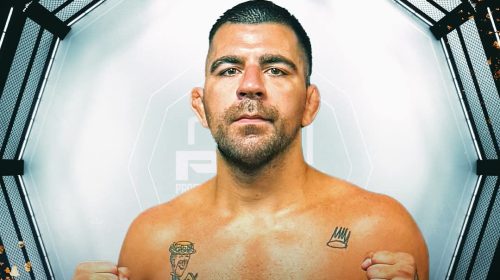
What Type of Martial Arts Should You Learn?
If you’re an adult interested in martial arts, learning one can bring tremendous benefits to your health and your sense of well-being.
It’s important to learn martial arts from a trained professional to avoid the risk of head injuries and other types of injuries.
With that being said, some of the possible benefits learning martial arts might bring to your life as an adult include:
- Improved heart health. Practicing martial arts regularly helps to be physically active and can provide you with a source of aerobic exercise to build your cardiovascular endurance.
- Build muscle strength. As we age, having muscle mass and strength can become even more important to our health. When you practice martial arts, it’s a way of using your bodyweight to build strength and muscle. In particular, you’re developing your core, arm, and leg strength. The more muscle mass you have, the stronger your bones are likely to be, and also the more you can increase your metabolism. Increased metabolism helps you burn calories even when you’re at rest.
- Again, as you age, you want to make sure you’re working to keep up your mobility. When you practice martial arts it helps you learn how to move your body in faster and more efficient ways. It also helps you become more agile.
- Stability and coordination are critical to overall wellness. In martial arts, there’s a lot of focus on balance and core strength and learning how to move multiple parts of your body simultaneously to block attacks. This can all help with your overall stability.
- Self-defense. Learning martial arts can better position you to defend yourself if you ever face an attack or a personally dangerous situation.
- Mental health. When you exercise at all, it’s good for your mental health. Martial arts, in particular, can help you deal with daily stress and can allow you to channel your anxiety in a healthy way. It’s a productive coping mechanism. When you exercise or move your body in any way, it also releases endorphins, which are feel-good chemicals.
So, with a general understanding of the benefits, what type of martial arts practice is right for you?
The following is an overview of some of the different types available to help you as you start to research and learn more.
Kickboxing/Muay Thai
Muay Thai is a term that is often used interchangeably with kickboxing. There are punching and kicking, but in reality, there are some distinctions between Muay Thai and general kickboxing.
Muay Thai requires you to use your feet and fists, but also your knees and elbows. There’s also something called clinch in Muay Thai, which is stand-up grappling.
When you’re learning Muay Thai or variations of kickboxing, you do drills with Thai pads. You can build on the techniques and then eventually ready yourself to throw strikes.
If you’re an MMA fan, you might be interested to know a lot of the fighters use Muay Thai as a foundation for their training.
Brazilian Jiu-Jitsu
Brazilian Jiu-Jitsu or BJJ is a grappling technique. It became a separate concept from Judo in the 1900s, and it got popular in early UFC.
The goal of BJJ is to put your opponent in a submission hold.
The core of this type of training is called rolling. This is essentially wrestling.
If your main objective in learning martial arts as an adult is self-defense, Jiu-Jitsu probably isn’t the best choice. It’s not realistic to think that you’re going to be wrestling on the ground if you’re trying to defend yourself.
Tae Kwon Do
Tae Kwon Do is one of the broadest and most popular types of martial arts in terms of what people want to learn.
Tae Kwon Do incorporates throws, kicks, and punches. It’s also part of the Olympics each year.
If you’re looking to martial arts to help improve your overall fitness, Tae Kwon Do may be a good option. It includes cardiovascular workouts.
Krav Maga
Krav Maga translates to battle contact. The Israeli Defense Force developed Krav Maga, and it’s used for real combat situations. If your main objective in learning martial arts is self-defense, perhaps consider Krav Maga.
You’ll learn things like how to disarm someone attacking you.
You’re also going to learn things that can’t be utilized in competitive martial arts, like throat punches.
There’s a certain intensity that comes with Krav Maga training.
It does also put you at a greater risk of getting injured during training, so that’s something to think about.
Karate
Karate is a traditional, well-known, and popular form of martial arts. It grew to prominence in the U.S. in the 1960s and 70s.
Typical training elements of karate might include working on balance, finding a sense of inner peace, and traditional strikes. There’s a view that learning karate is learning an artform.
Karate isn’t ideal for self-defense, but it is good for learning to control your emotions and more effectively deal with anger or anxiety.
Judo
Judo is one of the oldest types of martial arts, coming from Japan originally.
Jiu-Jitsu actually came from Judo. Judo is an Olympic sport as well.
Ronda Rousey is one of the most famous people to have studied Judo as a child.
If you train in Judo, it’s a very traditional practice. It’s not about hitting someone. Instead, it’s about being strategic in how you defend yourself against hits. You want to perfect your techniques, so you’ll do a lot of things over and over again.
MMA
Finally, there’s MMA. MMA combines all the elements of the different martial arts types named above, as the name “mixed martial arts” implies. MMA can include grappling, standup fighting and more. It’s very diverse.
If you study MMA or take an MMA class, you may end up doing a little of everything. It’s good for being well-rounded as a fighter.


























